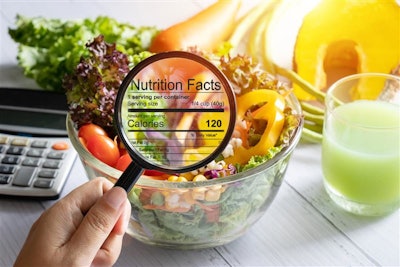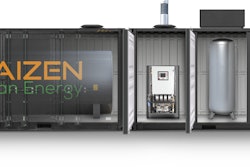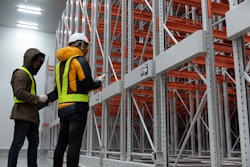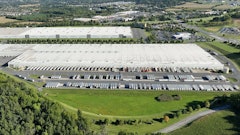
When it comes to food labeling, carbon is the new calorie. While some companies might be hesitant to dive into carbon labeling efforts because they think consumers won’t understand it, carbon emissions are much easier to comprehend than you might think. Carbon emissions are a quantifiable, scalable output that makes it simpler when compared to most other sustainability metrics.
However, simply sticking a label on a box isn’t the only step that companies should take. Consumer packaged goods (CPG), food logistics teams and brands should prioritize effectively communicating carbon emissions generated by their products throughout the entire value system. Not only is this a good business practice that fosters transparency and improves sales, but it also allows consumers to make more informed and sustainable purchasing decisions – as long as all of the information on carbon labels is data-based and science-backed.
As the EU rolls out a union-wide carbon labeling scheme by the end of 2022 and the United Nations vows to reach carbon neutrality by 2050, CPGs, food logistics teams and brands as a whole are beginning to introduce more carbon labeling on their packaging. While this trend is only expected to increase as legislation continues to pass, the law shouldn’t be the only driving force behind carbon labeling changes, as they offer many benefits to both consumers and businesses. Here are a few ways carbon labeling, when done right, can reduce the food industry’s carbon footprint:
Maximize carbon labeling by contextualizing carbon impact
Consumers are demanding transparency from brands. According to a report, 70% of shoppers are willing to pay more for a sustainable product and 88% of consumers want brands to help them develop more environmentally friendly and ethical shopping habits. Carbon labeling is an effective means to help consumers make informed choices, as long as it provides helpful context on how carbon emissions are measured and how that measurement compares to the food industry averages.
For example, consider nutritional information included on most food products. If a consumer cannot visualize a gram of cholesterol, how are they supposed to grasp the total amount in a product? For consumers to better digest information on labels, brands need to contextualize it and provide the opportunity to understand the impact with a little more nuance.
Giving consumers a visual scale to understand where their product stands in regard to carbon emissions produced throughout the value system has shown to improve a brand's trust and reputation. Carbon Trust found two-thirds of consumers are more likely to think positively about a brand that can demonstrate it has lowered a product’s carbon footprint. When provided with facts and evidence, brands can clearly communicate to consumers production-related carbon reduction, ultimately earning trust and credibility among consumers. Additionally, the presence of a carbon label on a product has been found to increase purchase profitability, ultimately benefiting businesses and ROI in the long run.
Deciding which data to reflect
While providing context is key to effective carbon labeling, brands also need to be deliberate about the data they’re sharing on these labels. For example, some brands have introduced carbon labels to showcase greenhouse gas emissions from production, manufacturing and shipping. With other brands to follow suit and the food industry about to be inundated with proactive labeling ahead of the EU legislation, consistency will be key for consumer adoption.
In order to accurately reflect a company’s sustainability efforts, the industry needs a unified labeling spectrum. From the farm-to-gate raw material production/extraction process to the storage, distribution and retail process, it’s critical for brands to capture carbon emissions used in the entire lifecycle of a product. A spectrum of impact is key because if only given binary options like organic vs. non-organic or GMO vs. non-GMO, consumers are disempowered from understanding the full range of impacts. Carbon labeling can distinguish itself from these polarizing designations by providing a scale to determine if a product is more or less harmful to the environment.
Looking at the bigger picture
Overall, carbon labeling should not be approached with an all-or-nothing mindset. Ideally, all products should reflect environmental impact messaging to equip consumers with a clearer understanding of the production process. Whether it be on-pack labeling schemes or providing external sources for information, consumers deserve to have access to this pertinent data in order to make more sustainable food choices.
Increased collaboration, transparency and communication surrounding carbon and sustainability in the supply system industry are essential for success. Retailers are asking brands to be more transparent, suppliers are asking the same of producers and this trend continues to travel upstream. Transparency in manufacturing efforts is what the food and beverage supply system needs, in addition to software and technology to better understand the origins of products and ingredients.
While sustainability efforts often require time, resources and dedication from brands, carbon is much simpler to quantify when compared to most other product impacts like human labor risks, biodiversity or animal welfare. For CPGs, food manufacturers and logistics teams looking to get involved in sustainability but unsure where to start, carbon labeling is a great first step. Consumers are already accustomed to paying more for organic products, so the same mindset should be applied to all products that are more sustainable.















